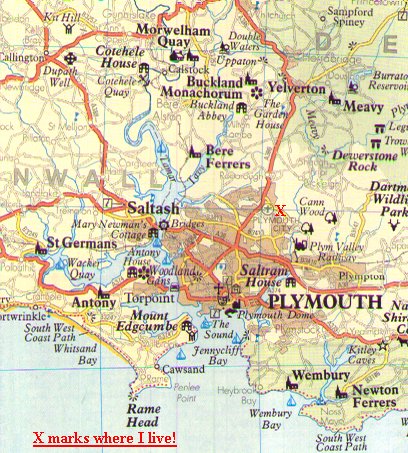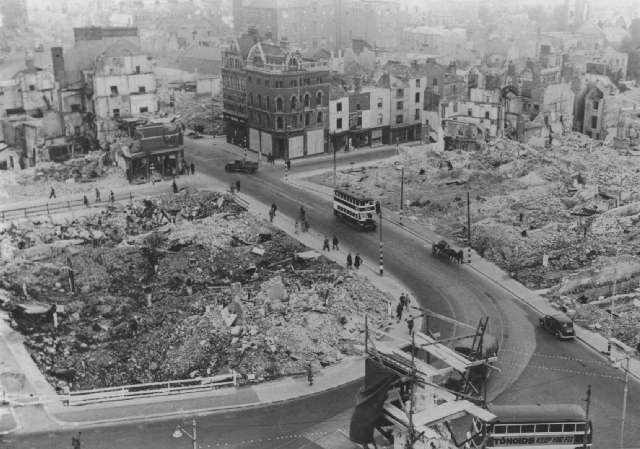


Clickable Map!
But not very clear - so click on these if you wish!
The River Tamar is one of the great natural boundaries of the West Country. It provides an emphatic border between Devon and Cornwall, finally merging with Dartmoor's River Tavy to flow into the great gulf of Plymouth Sound. The historic town of Plymouth dominates the region, yet within a few miles of the city boundaries lies Dartmoor's magnificent wilderness, and to either side of Plymouth Sound lie remote and beautiful coastlines.
Plymouth is Devon's largest urban area, and the modern city extends inland far beyond its historic waterfront. Plymouth possesses a fine natural harbour and is the site of the Royal Naval Dockyard, a major employer in the city, though it is now in decline. It is also an important fishing port and handles passenger traffic to the Continent. Manufactures include machine tools and chemicals. The city has an aquarium, several museums, and the University of Plymouth (1992, formerly a polytechnic college). Originally named Sutton, the town received a charter and its present name in 1439. During the 16th century it became a base for the expeditions of, among others, the navigator Sir Francis Drake. In 1588 the English fleet sailed from Plymouth Harbour to meet the Spanish Armada, and in 1620 the Pilgrims embarked from Plymouth to go to America, aboard the Mayflower.
|
The famous Hoe stands above the breathtaking vista of Plymouth Sound and Drake's Island, while to the north, on the west side of Sutton harbour, is the Barbican area of the old town. It is an intriguing tangle of narrow old streets and alleys such as the cobbled New Street, an Elizabethan survival. The Barbican is further enhanced by its busy fishing harbour and yacht marina and by numerous excellent pubs and restaurants. During World War II the city was bombarded by the Germans; it has since been extensively rebuilt, producing a spacious, modern city centre.
Population (1991 preliminary) 238,800.

